Even the most experienced birders who frequent world-renowned birding areas such as those in Cape May, NJ will be stunned by Somerset County’s remarkable diversity of birdlife, which surpasses many larger areas with its expanse of parks, open green spaces and wide variety of distinct habitats.
Bird watchers will come to appreciate Somerset County, NJ as one of the best places in the world to get out and grow their life lists.
Located in the Piedmont Plains Region of the state, we are home to three Important Bird & Birding Areas (IBBA) with locations that provide essential habitat for a variety of bird species and that make a contribution to the long-term viability of native avian populations in New Jersey.
Additionally, Somerset County is home to New Jersey Audubon’s Scherman- Hoffman Wildlife Sanctuary, located in Bernardsville at the headwaters of the Passaic River just before the river leaves the Highlands of New Jersey. The sanctuary has the riparian corridor of the Passaic River, floodplain habitat, upland forest and fields and is home to over 200 species of wildlife. Another birding favorite, especially in fall, is the Somerset County’s Hawk Watch Area platform located in Washington Valley Park.
NEW JERSEY AUDUBON’S SCHERMAN-HOFFMAN WILDLIFE SANCTUARY
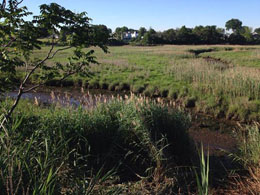
Owned and operated by the New Jersey Audubon Society, Scherman-Hoffman Wildlife Sanctuary is located on 276 acres of woodland, field, and floodplain habitat that is home to over 200 species of wildlife over the course of a year. The Sanctuary is open to the public. The sanctuary is situated at the southeast edge of the Highlands, and is bisected by the Passaic River. It is connected to the Morristown National Historic Park and is near several other preserved areas, including: Great Swamp National Wildlife Refuge, Lewis Morris Park and Lord Stirling Park. A nearby point of interest is the Raptor Trust.
Well-maintained and marked trails traverse the Sanctuary, ranging in length from 0.3 miles to 1.3 miles and passing through upland deciduous forest, fields, woodland, and the floodplain along the headwaters of the Passaic River.
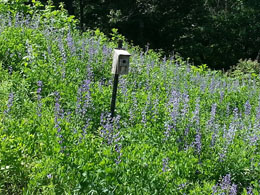
The Sanctuary is home to more than 60 species of nesting birds, and over 200 species of birds have been sighted at the Sanctuary, including as many as 25 species of warblers during spring migration. Nesting birds of interest include Worm-eating Warbler, Louisiana Waterthrush, Ruby-throated Hummingbird, Pileated Woodpecker, Wild Turkey, and Great-horned and Screech owls. For a Bird Checklist and Migration arrival dates, Click here
The New Jersey Audubon site guide located here offers a comprehensive look into the most important sites in NJ for breeding, wintering and migrating birds and for native bird populations in NJ. It is a valuable resource for communities, landowners, land planners, conservation and wildlife professionals, conservation organizations, governmental agencies and other stakeholders interested in conservation. This publication will also be used to educate landowners and community members about conservation opportunities at their local IBAs and will provide the necessary background to our volunteer-based Adopt-an-IBA Program.
DUKE FARMS
Located on 2,740 acres in Hillsborough, N.J., Duke Farms was one of the first sites designated by New Jersey Audubon as an Important Bird Area (IBA). The property contains approximately 1,100 acres of grasslands and agricultural lands, 950 acres of woodlands, 400 acres of floodplain habitat, two miles along the Raritan River and 72 acres of open water spread across nine lakes. This mix of habitat types provides an oasis for wildlife in a highly-developed region of New Jersey.
Season: Most birds are migratory. Their seasonal occurrence is as follows:
- Spring – March through May
- Summer – June and July
- Early Fall – August and September
- Late Fall – October and November
- Winter – December through February
From ants that aerate soil to the predatory bald eagle, Duke Farms is teeming with life. Hundreds of bird species live under the shady canopy of the woodlands, nest in and forage on meadow grasses, and rely on the lakes as a fresh water supply. Native wildlife contribute to habitat health by controlling pest populations, pollinating native plant species and playing a role in a complex food web. They are adapted to consume native plant species, so the health of native plants is vital to the survival of native animals. Non-native animals are also a threat because they compete with native animals for resources or use native animals as prey. Duke Farms staff and volunteers are undertaking measures to actively control invasive non-migrating Canada geese and monitor the health of native species. Continued monitoring and maintenance will promote healthy habitats that can support a growing population of beneficial native wildlife.
Duke Farms is segmented into five natural habitat areas:
Meadow Birds
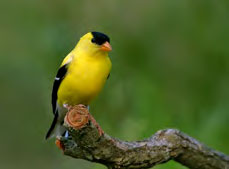 Meadows are very important bird habitats, providing critical resources all year long. Many birds that nest in the wooded areas come to meadows to forage on the abundant insects here. In addition to providing nourishment for adults, insect protein is critical for the proper growth and development of young birds. During fall and winter, birds feast on the vast amount of seeds produced by wildflowers and perennial grasses, which give birds enough energy to survive the harsh winter months.
Meadows are very important bird habitats, providing critical resources all year long. Many birds that nest in the wooded areas come to meadows to forage on the abundant insects here. In addition to providing nourishment for adults, insect protein is critical for the proper growth and development of young birds. During fall and winter, birds feast on the vast amount of seeds produced by wildflowers and perennial grasses, which give birds enough energy to survive the harsh winter months.
Grassland Habitats
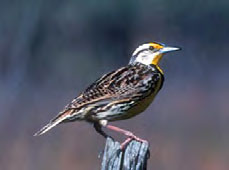 Many meadow birds need large open spaces to thrive, but grassland habitats are shrinking across the country as a result of urban land development and agricultural practices. Continued preservation of open grasslands, along with sound land management practices, are necessary for the survival of these species.
Many meadow birds need large open spaces to thrive, but grassland habitats are shrinking across the country as a result of urban land development and agricultural practices. Continued preservation of open grasslands, along with sound land management practices, are necessary for the survival of these species.
Woodland Birds
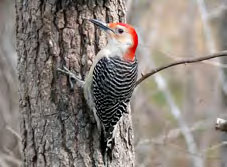 A rich bird biodiversity depends on the vast complexity of forest structure. Tree species have varying heights, leaf characteristics, and seed production, and each bird species finds its own niche within a wide array of microhabitats, or smaller habitats, within large habitats. Some birds forage among tree leaves, while other scour the bark of trunks and limbs. Some species forage only in the tree tops, while others only at lower heights. Different bird species find suitable nesting sites from the ground up to the tops of trees, either in cavities within the tree or nestled at the base of two branches.
A rich bird biodiversity depends on the vast complexity of forest structure. Tree species have varying heights, leaf characteristics, and seed production, and each bird species finds its own niche within a wide array of microhabitats, or smaller habitats, within large habitats. Some birds forage among tree leaves, while other scour the bark of trunks and limbs. Some species forage only in the tree tops, while others only at lower heights. Different bird species find suitable nesting sites from the ground up to the tops of trees, either in cavities within the tree or nestled at the base of two branches.
Birds of the Lake
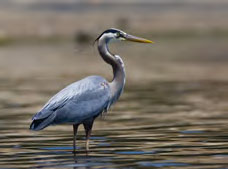 Water is an attractive and useful resource for many species of birds. Whether a species is sifting through the sediments for microorganisms, creeping along the shoreline stalking an unsuspecting frog or insect, or diving into the water for a fish from a high perch, aquatic habitats offer a wide array of prey items. The thick vegetation often found along water edges can provide perching or nesting sites and camouflage against predators.
Water is an attractive and useful resource for many species of birds. Whether a species is sifting through the sediments for microorganisms, creeping along the shoreline stalking an unsuspecting frog or insect, or diving into the water for a fish from a high perch, aquatic habitats offer a wide array of prey items. The thick vegetation often found along water edges can provide perching or nesting sites and camouflage against predators.
Birds of Prey
Raptors are carnivorous birds with keen eyesight, sharp talons for seizing live prey, and hooked beaks for tearing flesh. Raptor families include hawks, eagles, falcons, owls, and vultures (who usually feed on animal carcasses). This guild provides several ecosystem services, including reducing rodent populations and regulating waste, while also serving as cultural icons. North American raptors suffered major declines throughout history as a result of human persecution, trapping, pesticides and heavy metals. With the passing of stricter conservation and environmental regulations, raptor populations have rebounded. However, many species are still vulnerable to habitat loss, human disturbance, and collisions with buildings and motorized vehicles.
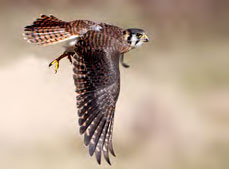
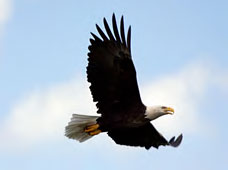
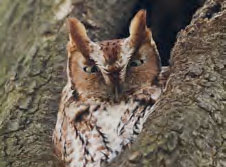
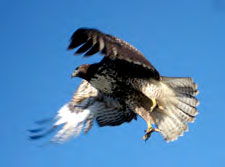
View the Duke Farms Field Guide for Specific Bird Species and Habitat Information.
DELAWARE AND RARITAN CANAL STATE PARK
Includes sites that span multiple NJ Counties including Six Mile Run
Six Mile Run Reservoir Site – Somerset, New Jersey
Nestled in central New Jersey, the Six Mile Run Reservoir Site provides an essential area for the public to enjoy the splendor of nature. The 3,037 acres offers areas of land to hike, bike, horseback ride, bird watch and hunt. Located in Franklin Township, Somerset County, the site has a rich cultural history and the files and riparian woodlands provide habitat for a variety of migrant and nesting species. Since the area is relatively secluded, birding possibilities are not well known. The area may be good for songbirds in migration and a scattering of wintering species however the site is too new for a good history. With numerous points of entry, the park offers good riparian birding especially during migration.
The Six Mile Run Reservoir Site has remained an oasis of farm fields and forests in an ever expanding community. We encourage you to take the opportunity to experience the beauty of this unique area.
SOURLAND MOUNTAIN REGION
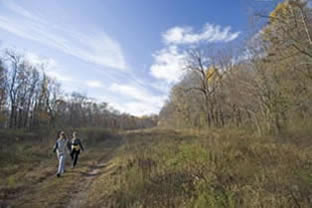
The Sourland Mountain Preserve offers an array of watchable wildlife including many species of migrating and nesting birds. The Sourlands is especially known for its nesting birds on the edges of their breeding areas including Summer Tanager, Winter Wren, and Black-Capped and Carolina Chickadees.
The 4,000 acre Sourland Mountain Preserve is owned by Somerset County and administered by the Somerset County Park Commission. The Preserve provides passive recreational opportunities in an undisturbed natural setting.
WASHINGTON VALLEY PARK HAWK WATCH AREA
Located in Washington Valley Park, on the First Watchung Ridge in Martinsville, New Jersey, is one of the East Coast’s premier locations to watch thousands of raptors migrate south every autumn. From August through November, the Hawk Watch Area is host to several hundred hawkwatchers from all over the northeastern United States. Armed with binoculars, spotting scopes and cameras, they come to witness the thousands of hawks, falcons, and eagles flying overhead, sometimes just over the treetops. The hawkwatchers count and identify the onslaught of raptors making their journey to Central and South America. Endangered and threatened birds such as ospreys, peregrine falcons, and bald eagles are just some of the noteworthy birds soaring above the area, especially when weather conditions are just right. A team has been counting hawks here since 1990 and typically spot from 10 – 20,000 hawks, falcons and eagles in a season.
The migration season runs from September through November with the greatest number of birds in the middle of September. Chimney Rock Hawk Watch, a platform a short walk from a parking area towards the end of Miller Lane. A team has been counting hawks here since 1990 and typically spot from 10 – 20,000 hawks, falcons and eagles in a season. The migration season runs from September through November with the greatest number of birds in the middle of September.
The Washington Valley Park Hawk Watch Area can be reached by traveling Route 22 to the Vosseller Avenue exit in Bridgewater. Drive up the hill (north) and make a left onto Miller Lane. Continue down Miller Lane, the dirt road will bring you into the parking lot. The Chimney Rock Hawk Watch platform is a short walk from a parking area towards the end of Miller Lane.
Birding Resources
Birding Pal – New Jersey
Birdwatching in New Jersey, Birding contacts and birdwatching information.
MososcocBirds
Mocosoco Birds publishes reports of interesting birds and nature-related happenings in the New Jersey counties of Morris and Somerset.
NJeBird
A real-time, online checklist program, eBird has revolutionized the way that the birding community reports and accesses information about birds.

